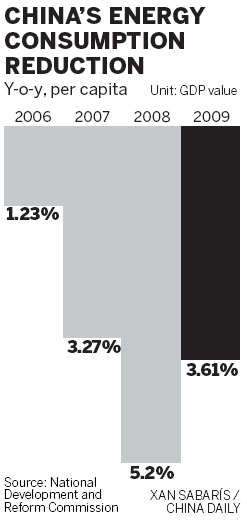Business
A new concept for Chinese city planning
By Zhou Siyu (China Daily)
Updated: 2010-11-24 07:58
 |
Large Medium Small |
BEIJING - Chen Xiaohong, dean of the Business School at Central South University in Changsha, Hunan province, is about to see a greener city emerge from the dots and curves on a design sketch to become reality.
As deputy director of the coordinating committee for the Changsha-Zhuzhou-Xiangtan City Cluster in Hunan province, she is part of an official team responsible for introducing a whole new town-planning concept in China.
"We are seeking new ideas as reference points for the planning of the city, so that the green concept of economic development and the improvement of people's livelihood can be integrated," she said.
Chen's university has signed a Memorandum of Understanding with University College, London (UCL) to employ its expertise in city planning in the construction of the cluster.
With a population of 65 million, the cluster consists of eight major cities in the central region of the country.
The program will strive to address facets such as reduced energy demand, integrated transportation systems, water resources, heritage conservation and regeneration, as well as sustainable urbanization, said Alan Penn, dean of The Bartlett Faculty of the Built Environment, who is leading the UCL team.
"Advanced expertise in urban planning from the UK will provide a better plan for our city, and that in turn, will attract more investment and boost the local economy," Chen said.
If the city cluster pilot project is successful, the model will be employed in the construction of the cluster, she added.

Chen's program is one example of the country's efforts to develop low-carbon city programs.
Moreover, the National Development and Reform Commission (NDRC), China's top economic planning body, has selected a number of pilot cities to tackle the problem of carbon emissions and energy consumption.
Five provinces and eight cities across the country, including the traditional heavy industry bases in the northeast, and coastal cities in the south, have been selected as pilot sites for the low-carbon city program.
Each area is required to draft its own plan to reduce carbon emissions and develop a green economy for the forthcoming 12th Five Year Plan (2011-2015), the country's blueprint for economic development for the next five years.
One of the eight cities chosen for the project, Tianjin has imposed strict restrictions on high-energy consumption and heavily polluting industries, while vigorously developing high and new technologies, including aviation, solar and wind power, as well as modern medicine.
In 2009, the city's energy consumption per unit of GDP production was reduced by 20.1 percent compared with 2005, according to data released by the Tianjin Municipal Commission of Development and Reform.
Meanwhile, in Nanchang, the capital city of eastern China's Jiangxi province, efforts have been concentrated on light-emitting diode (LED), photovoltaic (PV) and service outsourcing industries, as well as new-energy industries such as solar and wind power.
In a bid to promote the use of LED lighting and electric vehicles, the city has pledged to increase the number of electric automobiles to 1,000 by 2012, and that of LED bubbles to 100,000 by 2016.
"For future development, we will also strive to create a better and more efficient market environment to boost foreign investment into the green industry," said Ling Chengjie, vice-governor of Jiangxi province.
China Daily